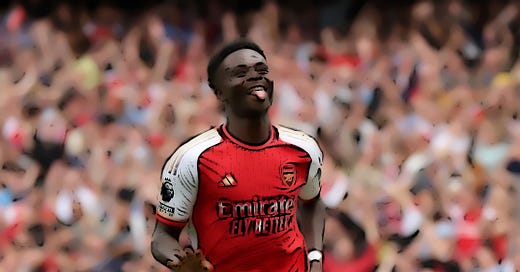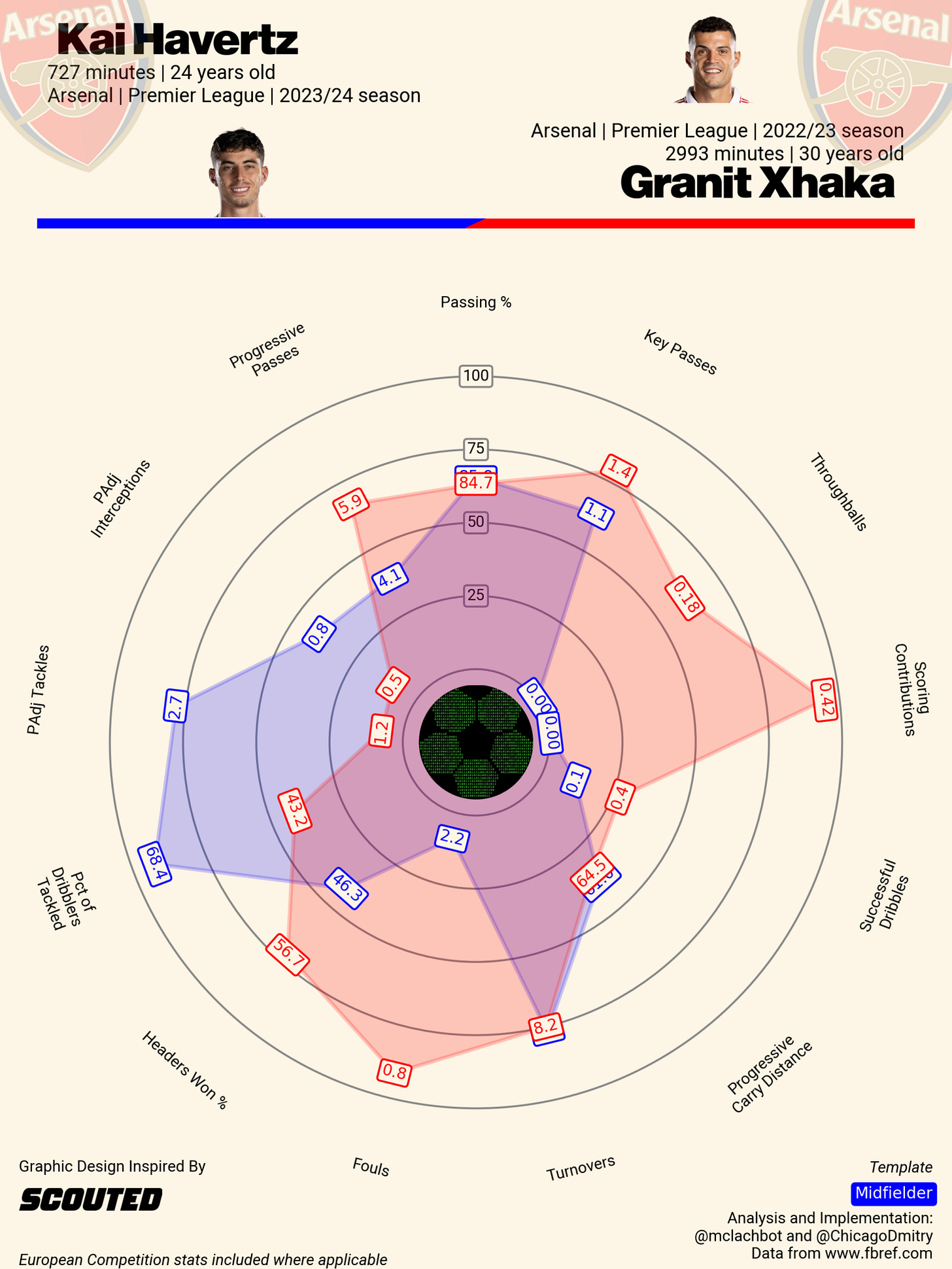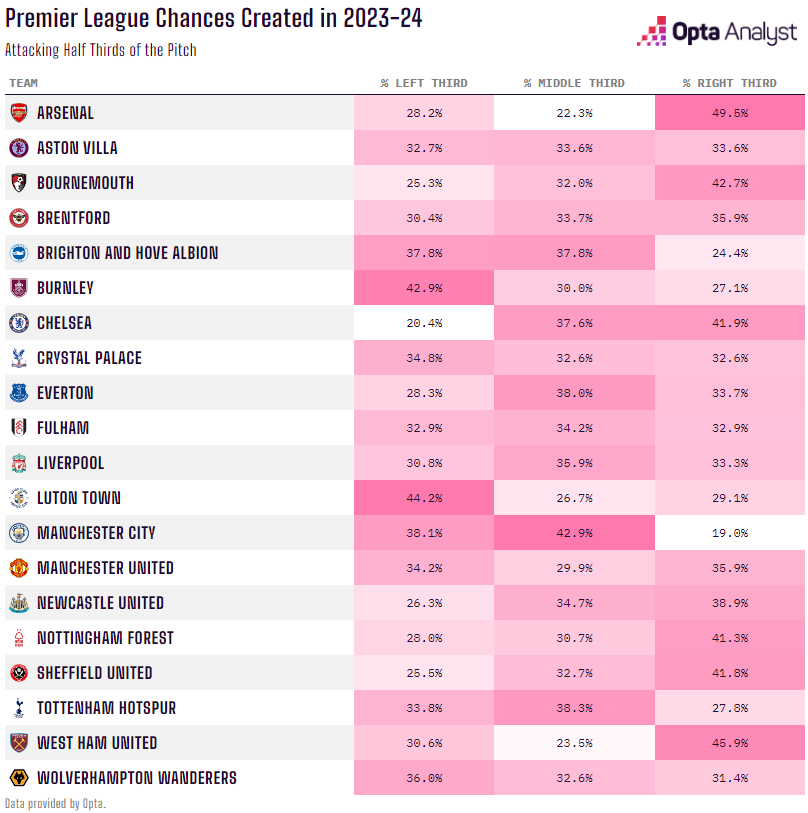The second leg of the Europa League’s round of 16 was a nightmare for Arsenal fans. William Saliba got injured in the first half, Pedro Gonçalves equalized with a halfway line strike, and even Bukayo Saka and Martin Ødegaard’s entry from the bench couldn’t propel the team through the matchup. Gabriel Martinelli’s miss in the penalty shootout ended the Gunners’ European campaign.
In football, success typically comes through playing to strengths or mitigating weaknesses. Last season, I believe Mikel Arteta embraced the former, focusing on what I term “Saka-centrism.” Bukayo Saka, an exceptional winger and Hale End academy graduate, started 87 consecutive Premier League games despite his young age of 22. This streak ended with an injury that prevented him from playing in a match against Manchester City. The trio of Saka, Ødegaard, and Ben White on Arsenal’s right was pivotal to their title bid. Although not triumphant, there’s room for growth. Their influence is undeniable: Saka and White played in every league game, while Ødegaard missed just one. Saka’s “double-double” of 14 goals and 11 assists is notable, with Ødegaard matching Martinelli as the top scorer with 15 goals and adding eight assists. White, as a right-back, also contributed with two goals and five assists.
The left side mirrored this with another strong triangle: Martinelli (15 goals, 5 assists), Granit Xhaka (7 goals, 7 assists), and Gabriel Jesus (11 goals, 6 assists). The pre-transfer rumors of Xhaka joining Bayer Leverkusen led to a vital task for technical director Edu: to replace him with someone who could elevate the team. Arsenal’s response was signing Declan Rice and Kai Havertz from London rivals West Ham and Chelsea, respectively. Rice was one of the league’s standouts, and Havertz’s move was a relief for many Chelsea fans, given his inconsistent performances and undefined role. Arteta seems to be positioning Havertz as a left-center midfielder in Xhaka’s stead.
This season, Arteta adjusted his tactics, aiming for more possession rather than outright aggression. The defense was set with Partey, White, Saliba, and Timber until the last one sustained an ACL injury in the opener. Soon after, Partey was sidelined. In midfield, Rice, Ødegaard, and Havertz were tried, but Havertz’s influence was lacking, leading Arteta to try Fábio Vieira, though without solving the issues. Against Manchester City, a midfield of Jorginho, Rice, and Ødegaard was fielded. The match turned when Arteta introduced the more robust Partey, Takehiro Tomiyasu, and Havertz, with the latter two engineering the play leading to Martinelli’s goal. Yet, Havertz has shown only glimpses of promise with a single goal and assist in ten league games.
The left flank’s reconstruction is struggling. A Tifo IRL video highlighted how Arsenal’s attacks have shifted, increasing from 31% on the right last season to 39% this season. This imbalance has made Arsenal more reliant on Saka. Their Carabao Cup exit, a 3-1 loss to West Ham where Saka and Ødegaard came off the bench too late, mirrors a previous season's elimination by Brighton without them. Arsenal’s one-dimensional focus was also evident in a match at Stamford Bridge where Chelsea, under Mauricio Pochettino, managed to neutralize Ødegaard and Saka's threat, though the latter still managed an assist.
Bukayo Saka remains Arsenal's star, pivotal to their aspirations. But the question looms: Can Arsenal clinch victories if "Saka-centrism" becomes their only tactical approach? I have my doubts, particularly with Havertz in midfield, who so far seems ill-suited to invigorate the team’s dynamics in the league.






